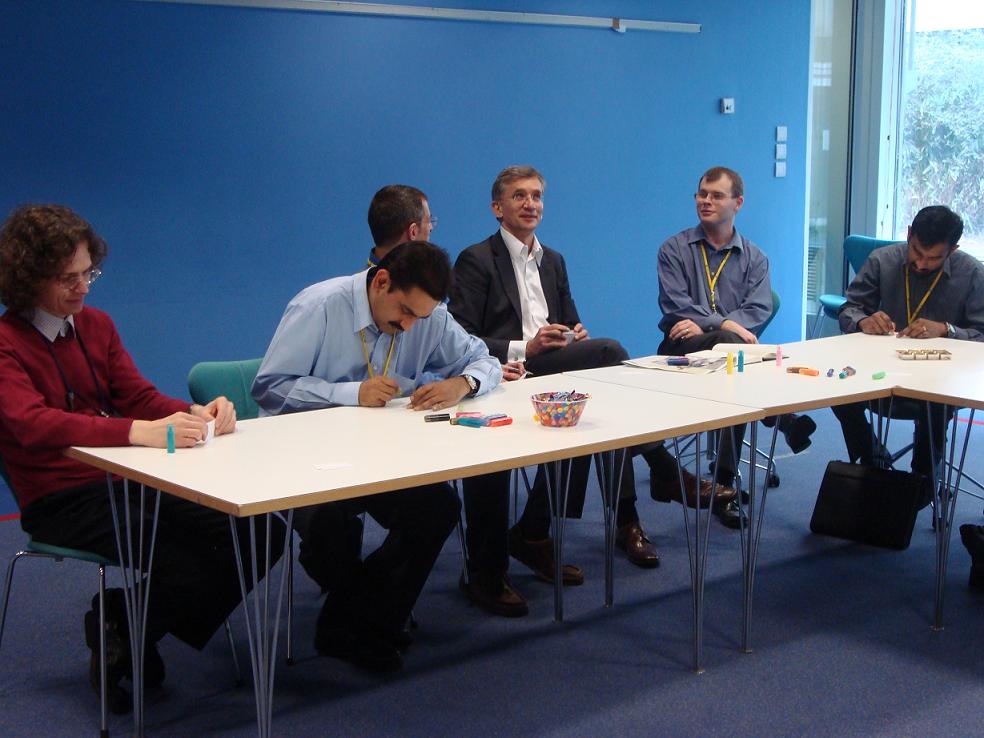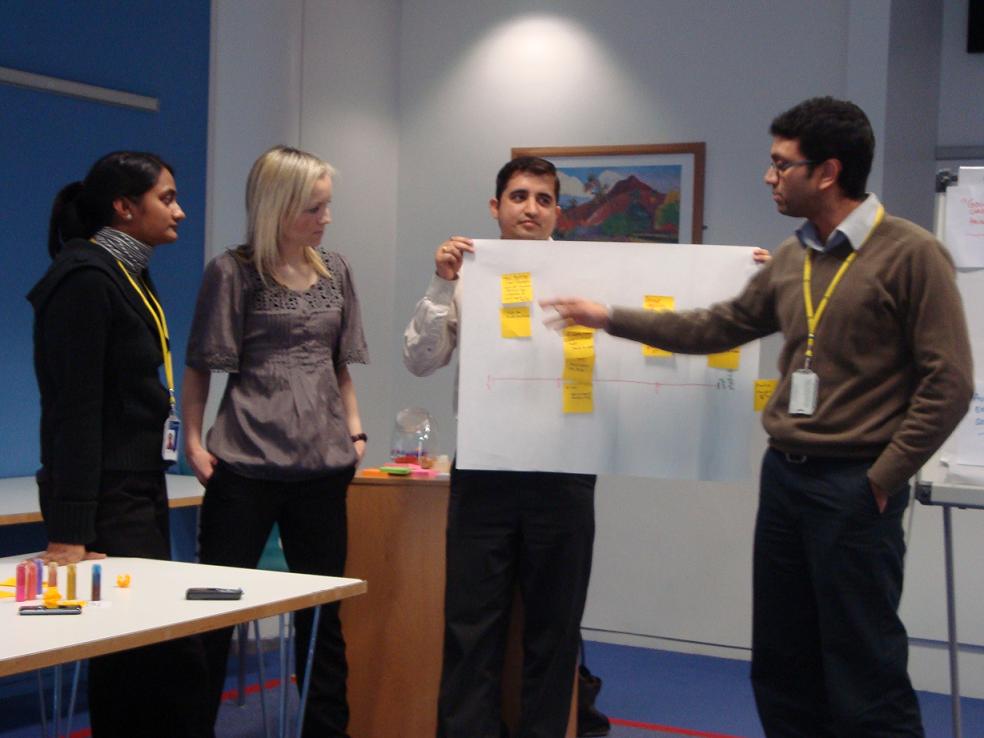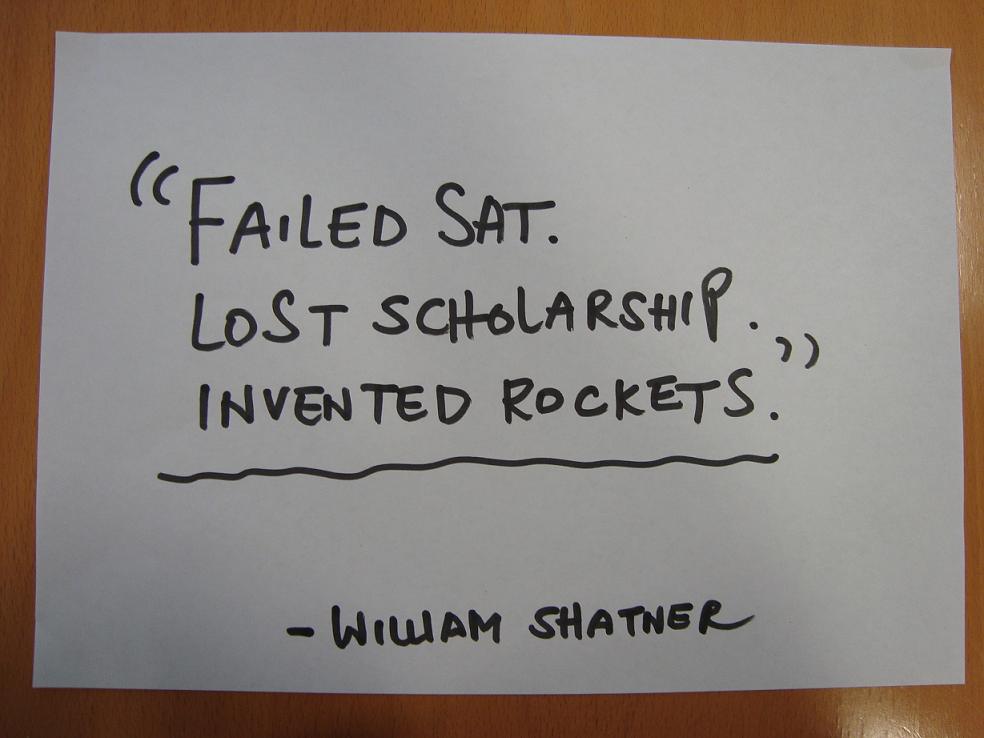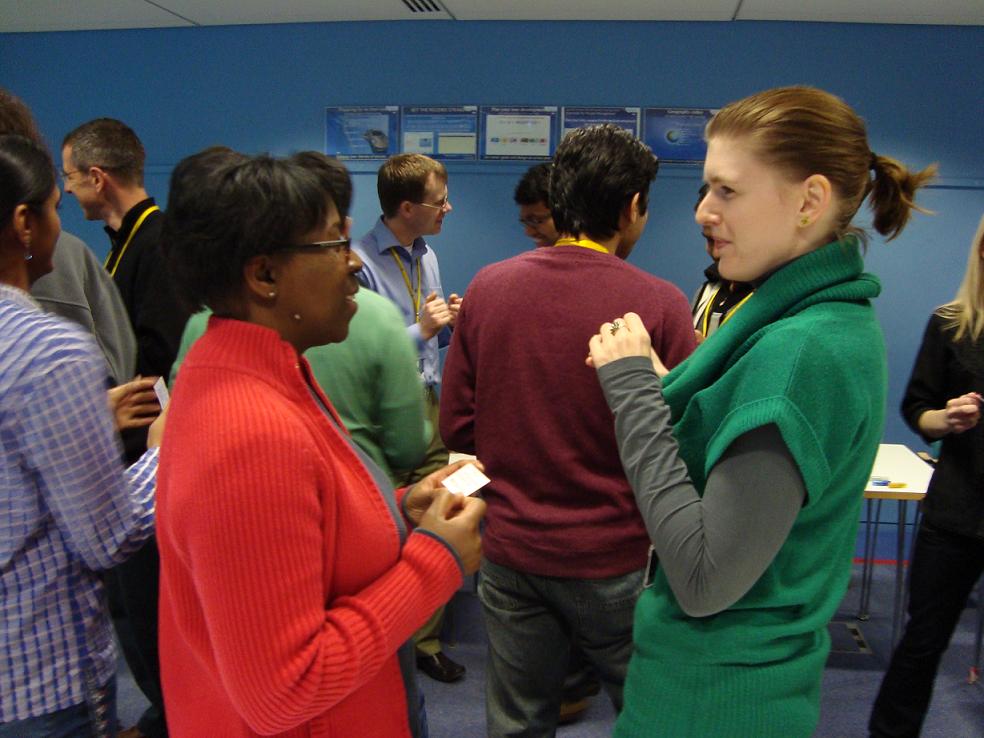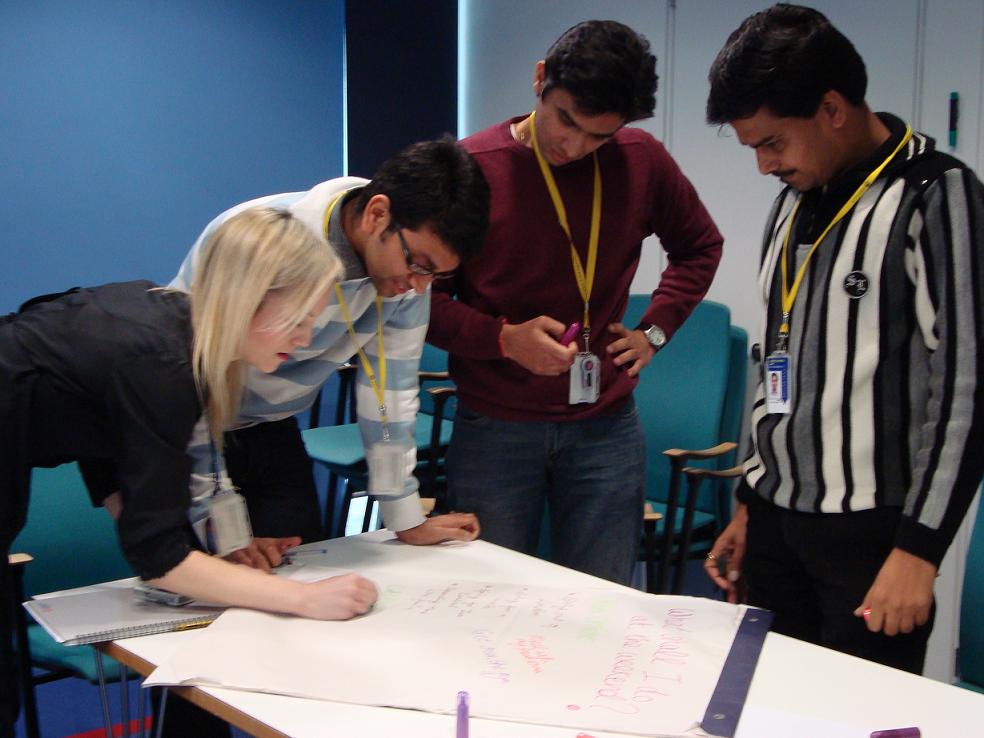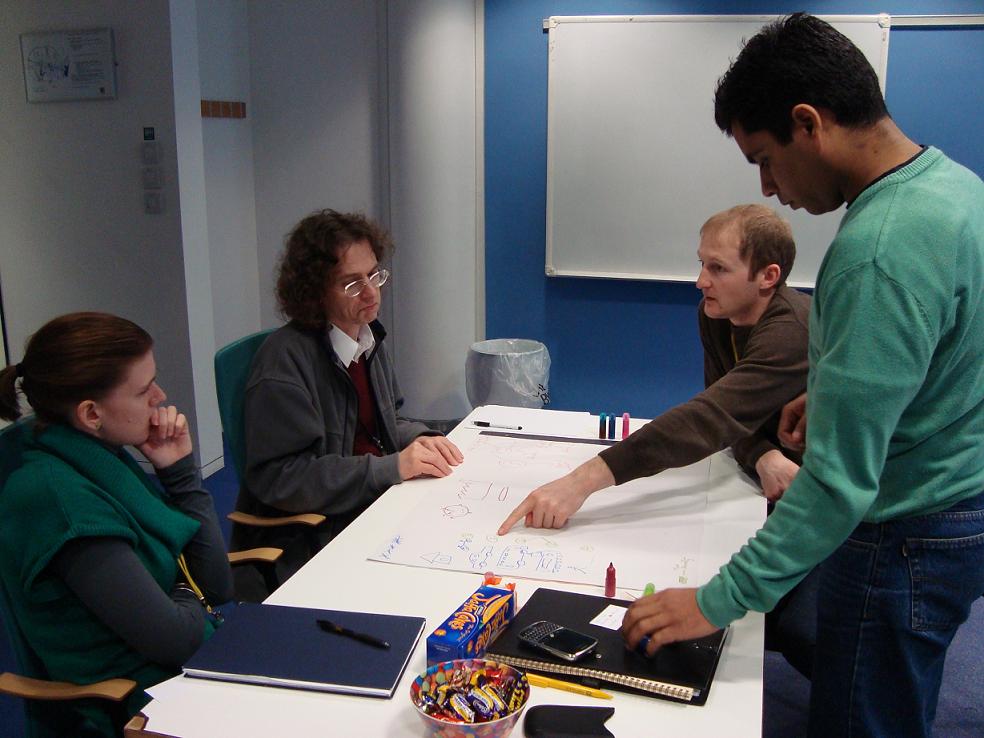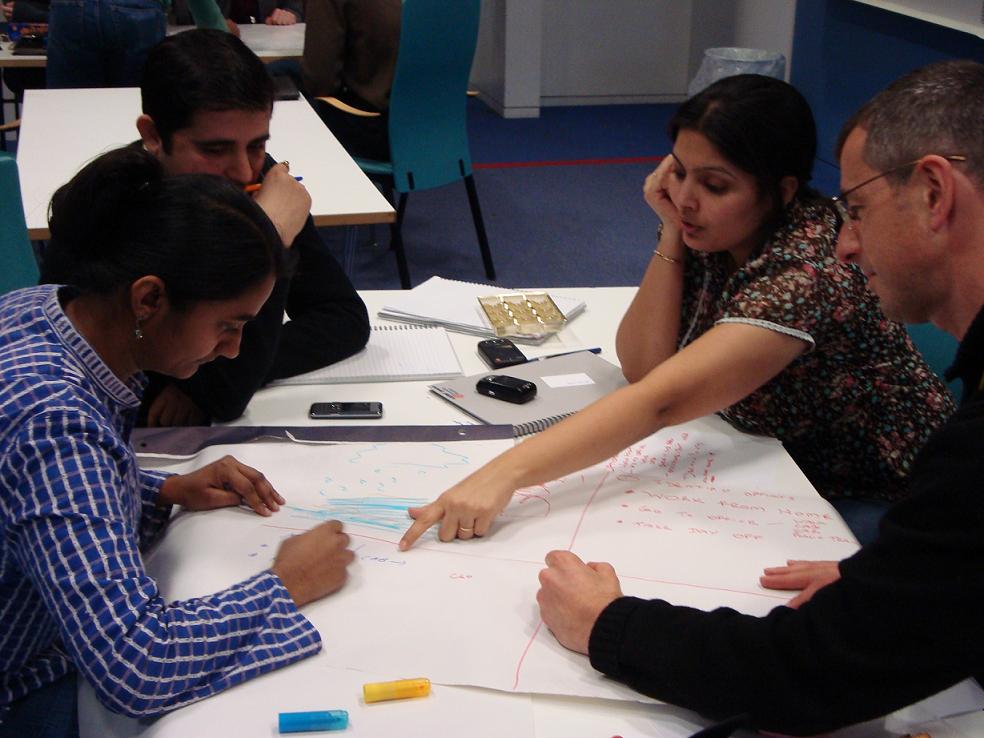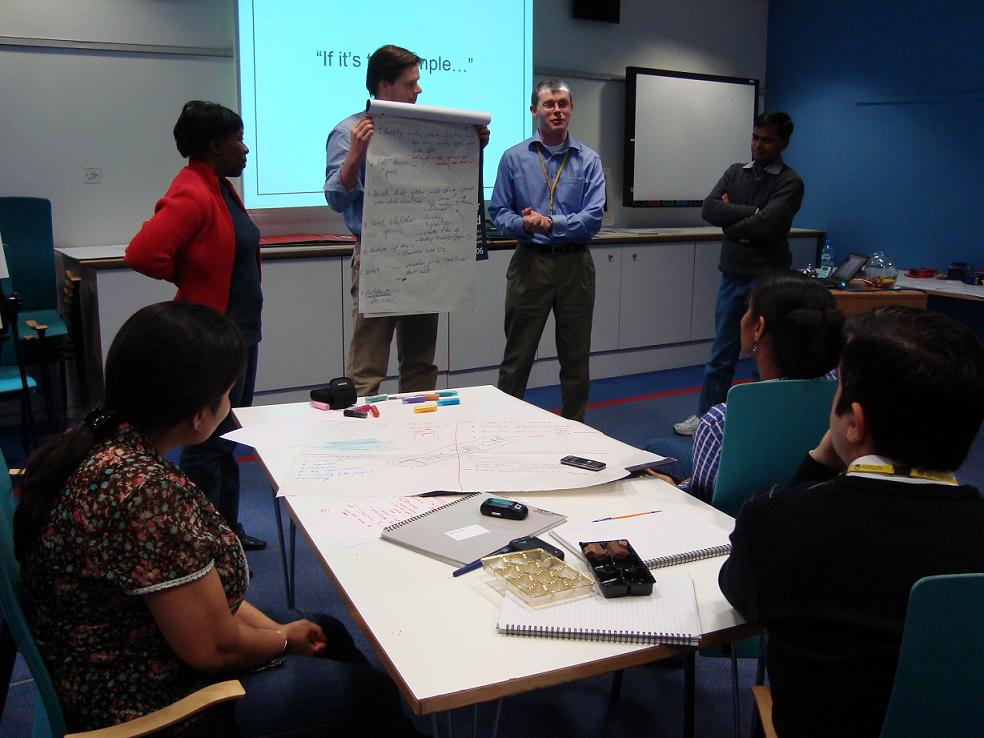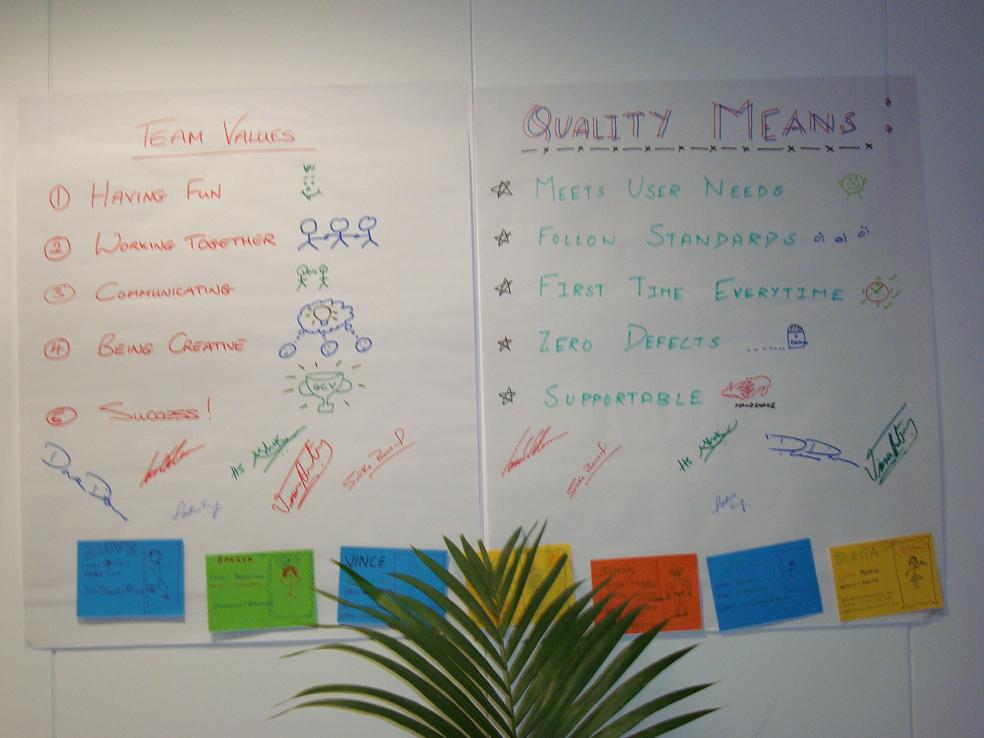As a followup to an introduction on Real Options Thinking, a group of us gathered once again last Thursday to consider ways in which we could apply Real Options in our projects.
Let me tell you a story
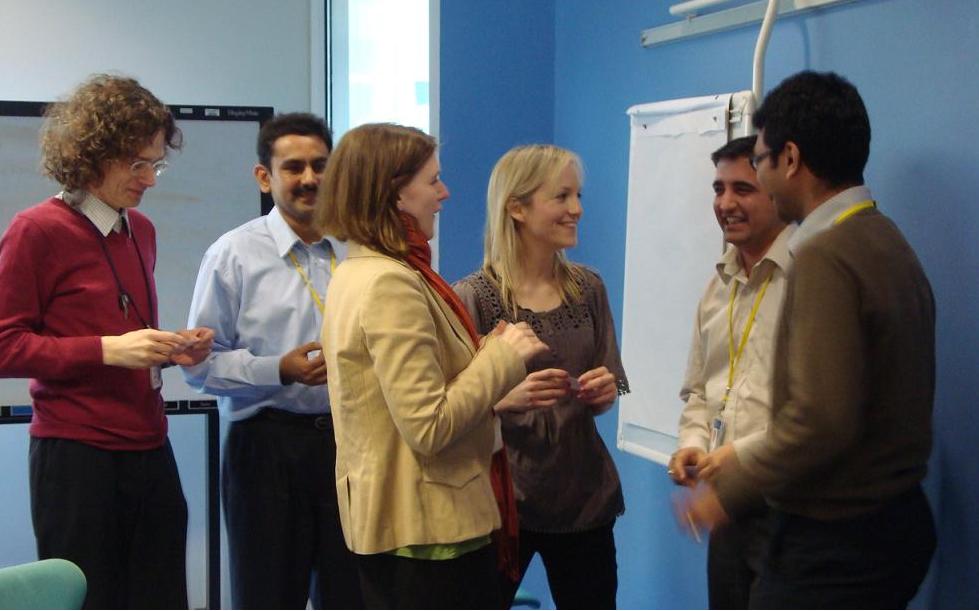 As usual, we kick off with an ice breaker to get everyone moving. Each participant pairs with the person they know best and comes up individually with Six Words to describe one another (as opposed to themselves like we did in the first session). Participants then circulate in pairs to exchange the story they’d written. This ice breaker seems to generate even more laughter and joviality than the first time we played it together.
As usual, we kick off with an ice breaker to get everyone moving. Each participant pairs with the person they know best and comes up individually with Six Words to describe one another (as opposed to themselves like we did in the first session). Participants then circulate in pairs to exchange the story they’d written. This ice breaker seems to generate even more laughter and joviality than the first time we played it together.
The Power of Collective Memory
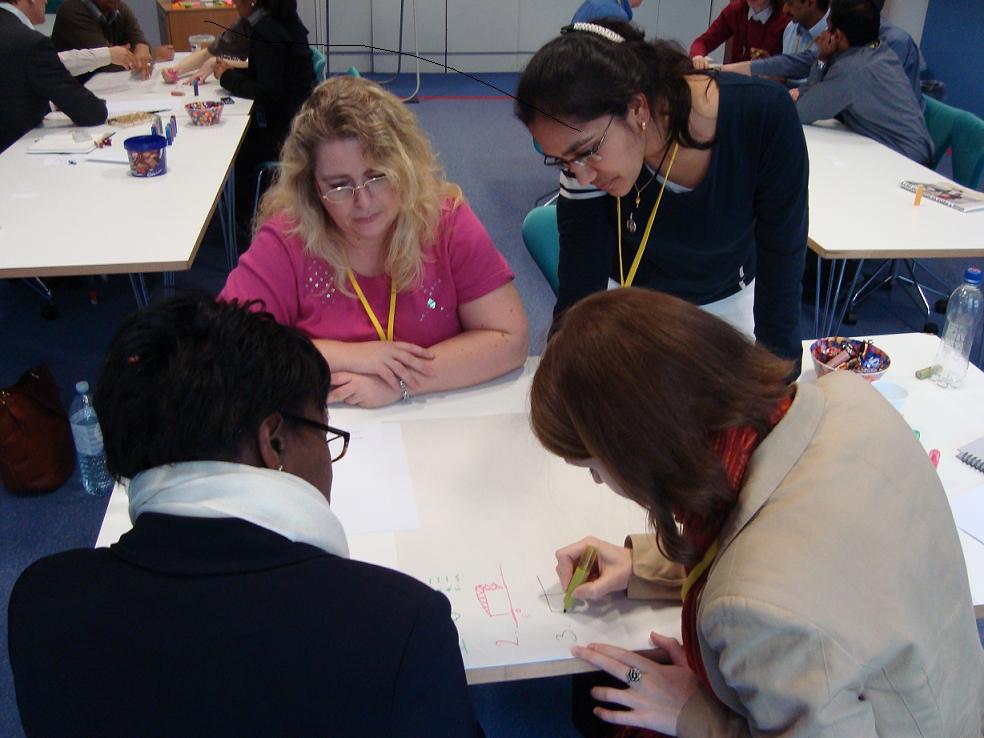 Next we get together by project team and spend 10 minutes recapping on Real Options theory. Each team then presents what they’d remembered about Real Options to the rest of the group. As many discover, this is an effective way of reinforcing the learning from the previous week. You can download the handout here.
Next we get together by project team and spend 10 minutes recapping on Real Options theory. Each team then presents what they’d remembered about Real Options to the rest of the group. As many discover, this is an effective way of reinforcing the learning from the previous week. You can download the handout here.
Applying Real Options to our projects
We begin the second half of the session by brainstorming current examples of Real Options in our projects to generate scenarios where Real Options could be applied.
Then we select one particular scenario and work through the 7-step Optimal Decision Process. Last, but not least, each team presents their scenario back to the group to demonstrate how they could apply Real Options on their project. One team comes up so many more options they’re keen to hurry back to their project to try them out.
Facing Uncertainty
As a final bit of fun, participants are asked to create a Human Uncertainty Spectrum, with participants sorting themselves from those who are supremely comfortable with Uncertainty on one end to those least comfortable with Uncertainty on the other. This exercise generates the most discussion and laughter of all. Who would think confronting ourselves about how we really feel about Uncertainty in public could be so much fun?
